
If you want to establish your school as a trustworthy online course provider, you need the online reputation to back it up.
Since remote learning is new and unfamiliar to many prospective students, it’s important to pull out all the stops when showcasing the quality of online education that your school offers.
Content marketing is a great way to flex your school’s online learning muscles in an informative, innovative, and entertaining way. From trial classes to blogs on remote learning tips, the more resources you can provide prospects, the more likely they are to opt for your school’s online courses. Here’s how to do it.

1. Create Online Learner Personas for Education Content Marketing
Most schools have a pretty good idea of what their target audience looks like after years of recruitment campaigns – and many have consolidated this expertise into student personas.
However, the education industry has been flipped on its head in recent months, so it’s important to consider who, exactly, your school aims to target in the current climate. What characteristics do these prospects have? What are they looking for? How does your school meet these needs?
How you answer these questions will not only influence the content you create – this insight will help frame your digital marketing strategy as a whole. After all, if you don’t understand your future students, how can you successfully recruit them online?
To start creating your online learner persona, first think about who these prospects are. You may want to define demographic factors like age and country of origin, as well as any other defining characteristics, to describe their background:

Next, identify what these prospective students are looking for in a school. Consider their education or career-related goals, as well as what they’re looking for in an online course and what they hope to get out of it. This will help you define the persona’s motivations:

Lastly, define any concerns this persona may have that could prevent them from applying to your school:

Once you’ve created your online learner persona, you can then use the information to create key messages that show how your school meets the persona’s motivations and mitigates their concerns. These messages will form the basis of what you want to drive home with your content:

When it comes to education content marketing, there’s no point in creating content just for the sake of it. Always be deliberate. An online learner persona can help point your school in the right direction, and the key messages will help you create optimally targeted content.
2. Research Online Learning Keywords to Frame Your Content Marketing Strategy
Just as online learner personas tend to have different characteristics than on-campus learners, their higher ed research process looks different as well.
A few months ago, your prospective students may have searched for something like ‘culinary school near me’ or ‘top mba program in london’ when researching schools. Nowadays, however, prospective students are making queries focused on online courses. Keywords like ‘online English program’ and ‘online marketing certificate’ are the ones your school should strive to rank for now.
That’s why one of the most important aspects of tailoring your content marketing strategy for online courses is finding out what keywords your prospects are using to search for them.
If you’re not sure where to start, you can take cues from your competition. Put yourself in your prospects’ shoes, pretend to search for schools online, and see what comes up. Look at the kinds of keywords that appear on both organic and paid queries. Pay close attention to schools that are established online course providers, as they likely have a comprehensive keyword strategy for the format.
Example: Search results for ‘online MBA’.

From there, you can use Google Search Console to research additional queries.
Example: Keywords related to ‘online learning’ in Google Search Console.

Once you’ve created a robust list of keywords, you can start strategically integrating them into your school’s content. Google values high quality, SEO-friendly content, so this practice is a great way to improve your school’s search ranking for key queries.
For blog posts, work keywords into the following locations:
- Title
- URL
- Tags
- Body text (link to internal pages)
- Meta description
- Image alt text
At the end of this process, your blog post should look a little something like this:
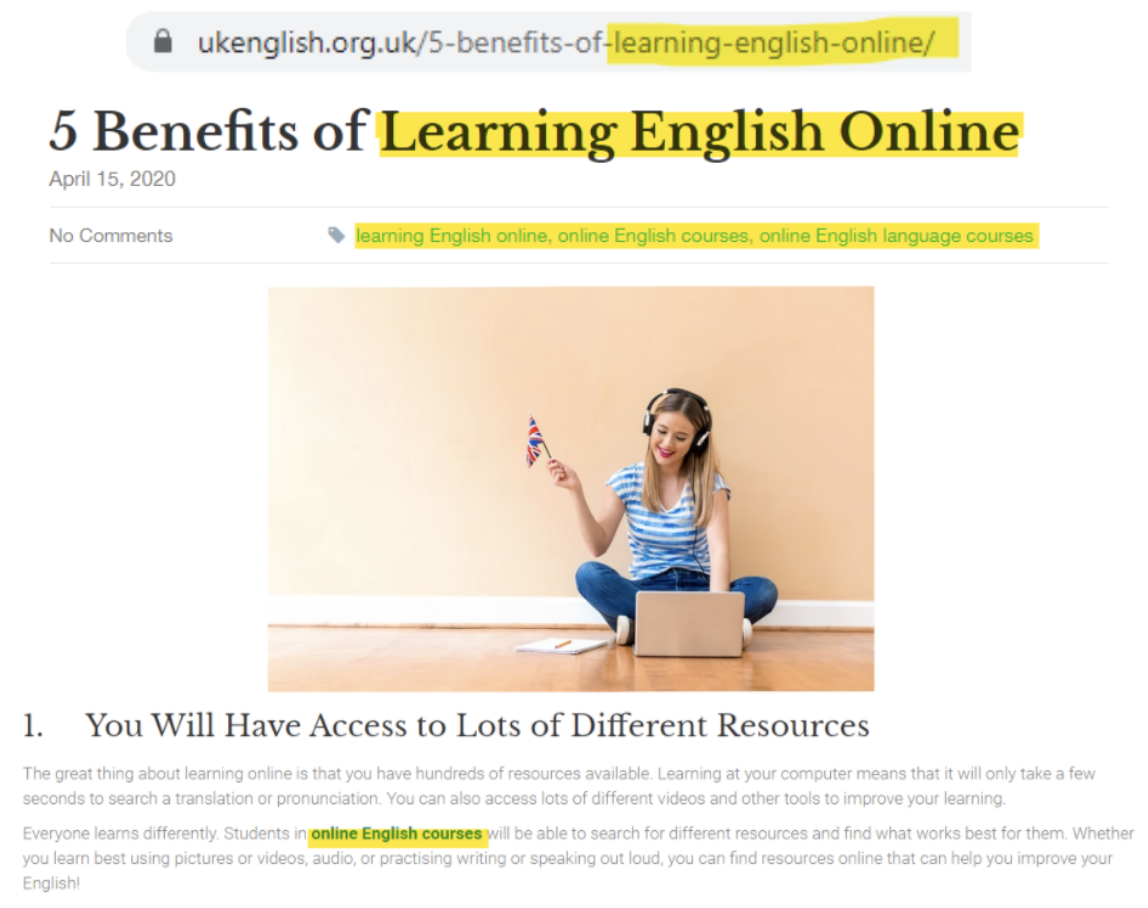
When it comes to video content, the process is similar but the keyword locations are somewhat different. Make sure to include keywords in the title, description, and tags. If your school has the resources for it, you should also create a transcript for the video. This makes the video more accessible – a factor which search engines prioritize.
3. Create Multimedia Content to Promote Online Courses
The previous two tips focus on the background research required to know who you’re trying to reach with your content, and how you can target the content to this audience. These steps set your school up for success when it comes to the next tip: what kinds of content you should create for your prospective students.
Creating Targeted Blogs
Since online learning is uncharted territory for many, prospects are looking for resources that can help them discern whether they’re a good candidate for online learning, as well as what impact these courses will have on their career, further study plans, or other ambitions.
Blogs are a great way for schools to answer these questions in detail, as well as any other motivations and concerns unique to your prospective students.
If your school hasn’t created this kind of content yet, you may want to start with some general blogs that feature the online courses your school offers.
Example: A blog from the University of York that features a few of the unique courses the school is offering online.

Another blog angle you can take is to focus on the benefits of online courses for those apprehensive towards remote learning.
Example: A blog from the Centre of English Studies outlining the advantages of studying English online.

For those concerned about the value of an online certificate, degree, or course in the marketplace, you can assuage their worries by creating blogs that highlight the credentials they’ll receive or the career opportunities they’ll have access to by studying at your school.
Example: A blog from Canadian Business College that shows how a diploma from their school will help professionals excel in the current business world.

To target those further along in the enrollment journey, you can create blogs that help these prospective students make the most out of their studies. Content that provides remote learning strategies demonstrates your school’s commitment to its students’ success, and will be well-appreciated by prospective students.
Example: Northeastern University’s Online Learning Tips, Strategies, & Advice centre, which offers a wealth of remote learning-related blogs. If your school has the resources to create an extensive blog bank of online course resources, consider creating a section on your site devoted to this content.
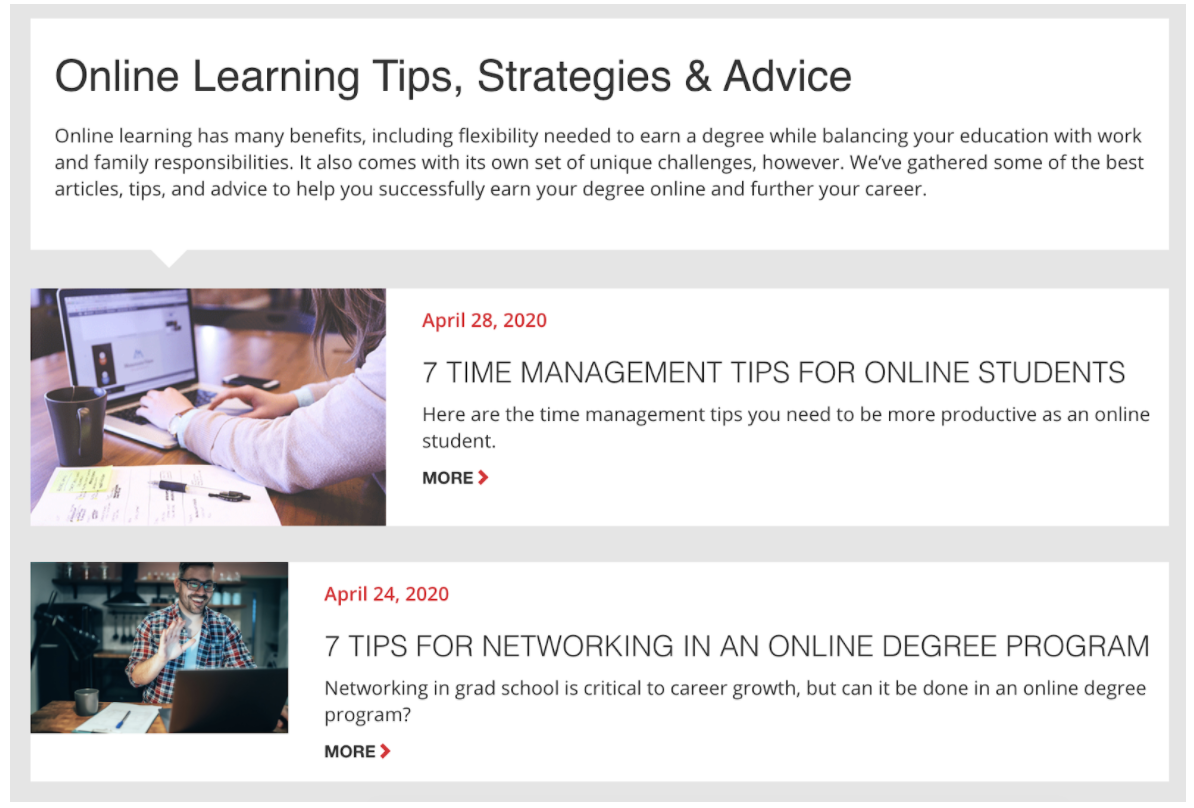
Infographics for Online Learning
If a prospective student doesn’t have time to read an entire blog post, they’ll be more likely to scan an infographic to get the information they need. In essence, infographics summarize the kind of information you’d find in written content, but in a more visually appealing format. Creating infographics is a great way to take the research you’ve already done to write blog posts and repurpose it into snackable content.
Example: An infographic from Illinois Online, a chapter of the University of Illinois.

Video Content for Schools
Although creating videos can be resource-intensive, organizations that include video in their content marketing strategy get 66% more qualified leads per year according to a recent Oberlo study, so it’s something your school should consider investing in if you haven’t already.
Video content is also a great way to allow prospects to connect with your school in lieu of in-person events. You could create videos introducing your online instructors, for instance, or feature professors talking about the online courses they’re teaching.
Example: A helpful video guide to online learning from Nova Southeastern University featuring a professor discussing study tips.
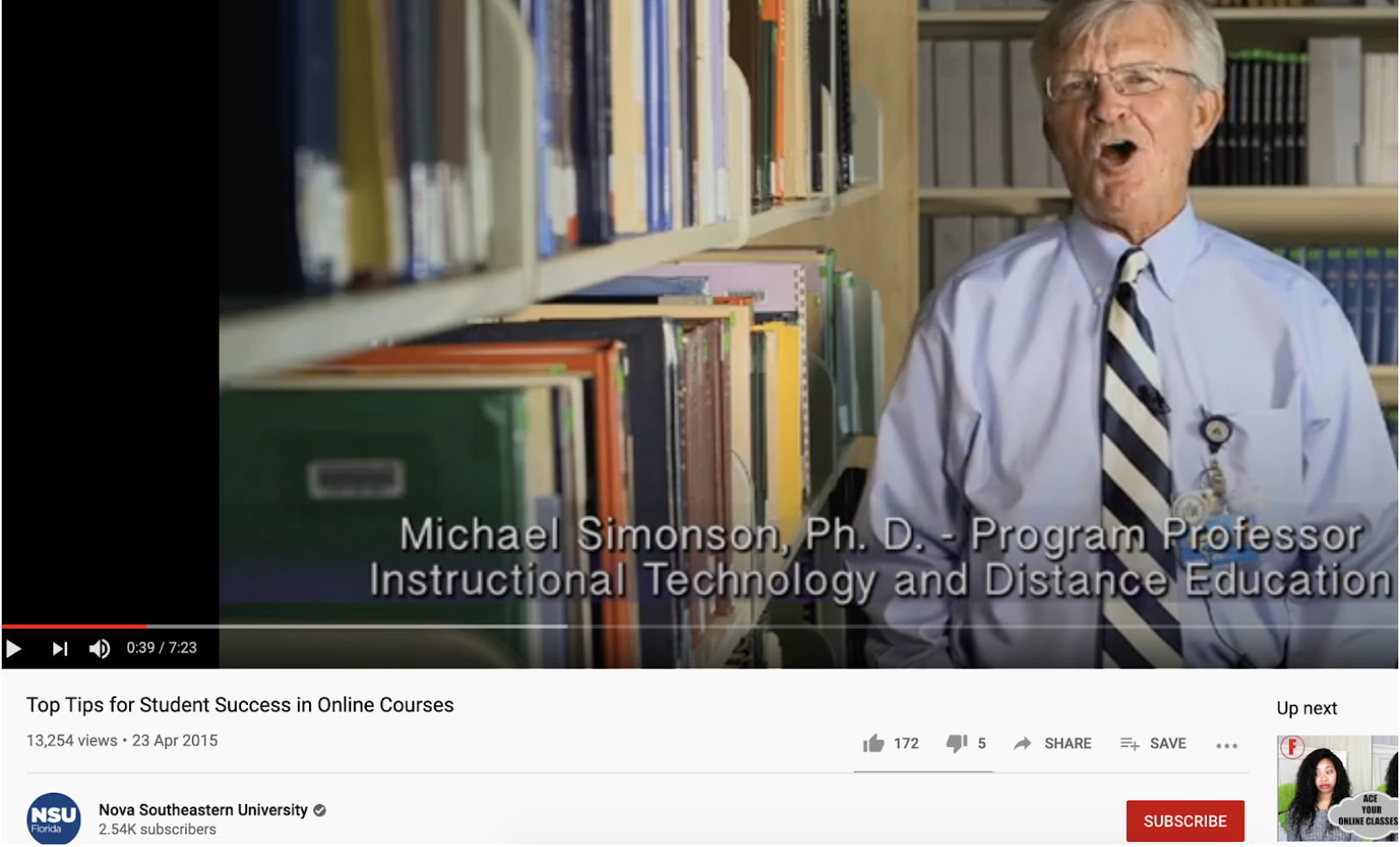
Whether you’re creating videos or blogs, make sure you strike a balance between quality and quantity. While Schools should strive to produce a high volume of regular content, it also needs to be targeted, optimized content that provides value to its unique audience. That way, your school will generate the greatest possible ROI from its content marketing efforts.
4. Offer Resources Related to Your School’s Online Learning Platform
Today’s prospective students don’t just want to know what they will learn in their online courses – they also want to know how they’ll learn. At the start of COVID-19, many schools hastily moved to online course delivery, and prospects want to be sure that they will receive high quality lessons if they opt for your school.
Creating content about your online course software is a great way to show off your school’s expertise, and familiarize interested leads with the platform before they start their studies.
Example: An ATC blog on the game-based learning approach they take for their online automotive courses. There are many different ways to learn online, and it’s important to show why yours is effective.

Your school can also offer free trials of its online courses to give prospects a hands-on understanding of your remote learning software.
Example: Each week, IH Dublin hosts free trial lessons to give prospects a taste of what they’ll receive when they book.
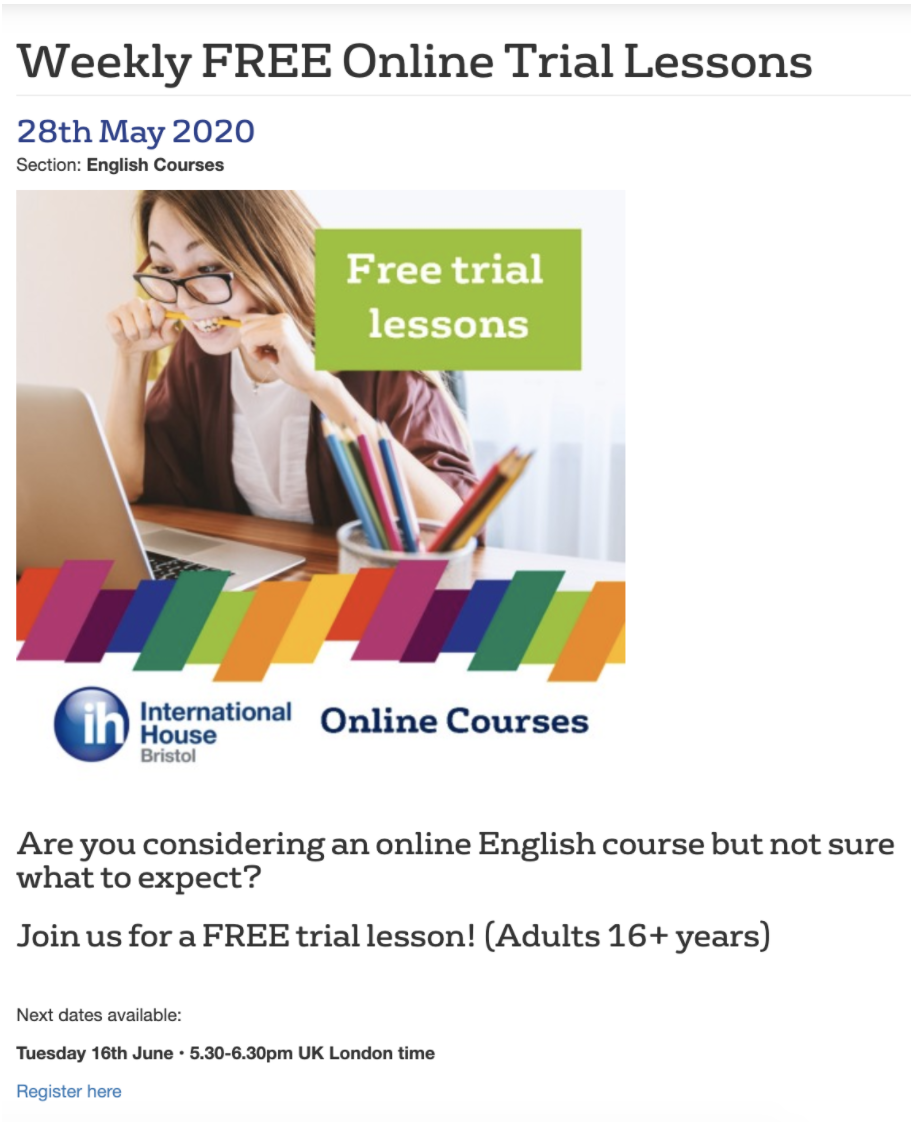
Interactive content is a great way to not only attract prospective students, but get future students prepared and excited for their studies.
5. Add Virtual Events to Your Content Marketing Strategy for Online Courses
If your school has relied heavily on in-person events like campus tours or open houses to attract students, virtual events will be your recruitment lifeline until these activities are possible again. From Facebook Live to webinars to online campus tours, there are plenty of ways to showcase your school and connect with prospective students remotely.
Virtual open houses, and other online events that allow prospects to explore your campus, are especially helpful for schools that offer multi-year programs, as in-person courses will likely resume at some point during their studies.
Example: Brock University’s ‘Virtual Open House’ page. This section of the school’s site includes a number of videos that help prospects get the look and feel of the school, as well as updates on upcoming events.

Another great way to connect with your prospective students in real time is by hosting webinars. These online events allow you to deliver a lot of helpful information to interested prospects in a compact format. Many webinar platforms, like GoToWebinar and WebinarJam, allow you to have Q&As and create polls to make the sessions more engaging.
When it comes to webinars, the topic possibilities are endless. You could host an event that offers a more general overview of your school, for instance, or focus on niche topics related to specific study areas.
Example: Laurier University’s Registration Webinars page. The school offers multiple webinars to guide students through the application process.
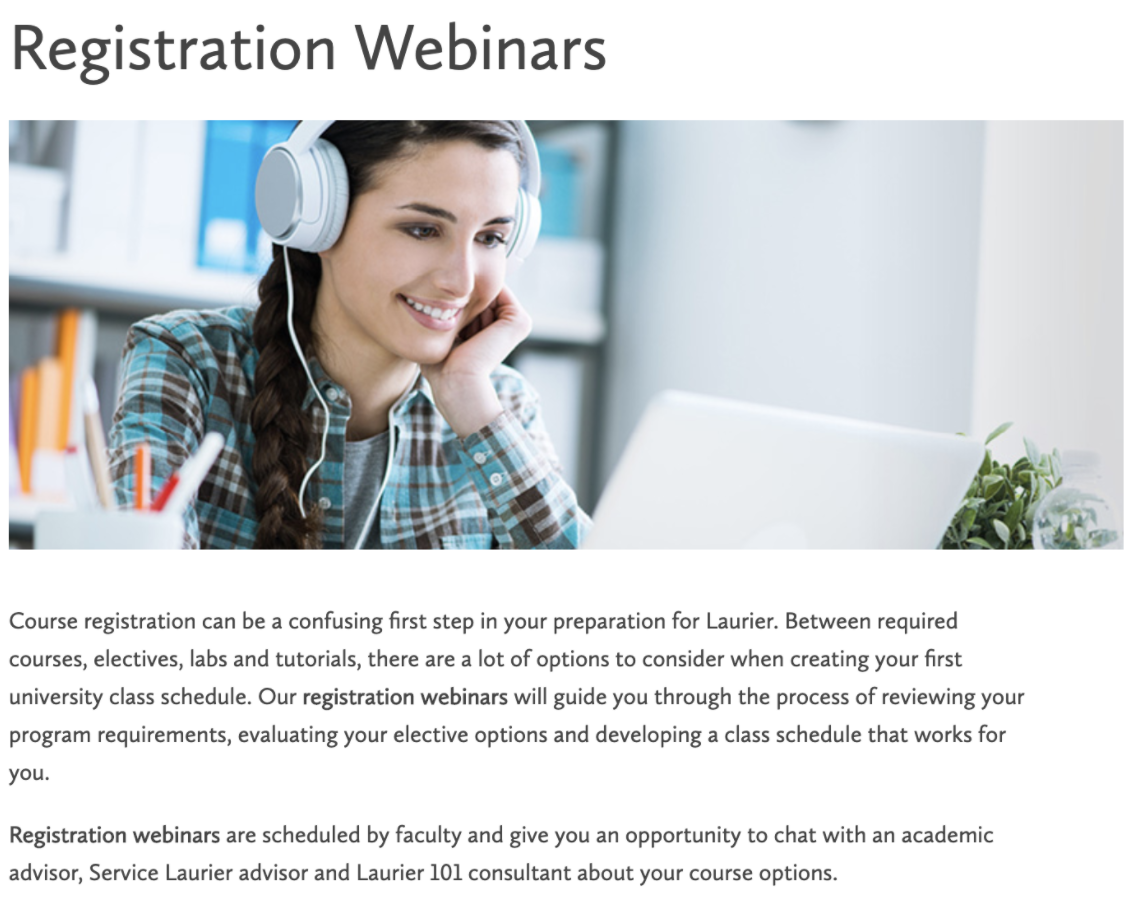
Schools may also want to consider streaming events on social media through Facebook Live or LinkedIn Live, which allow prospects to watch, react, and comment in real time. If your school hasn’t ever tried livestreaming, there’s no better time to hop on the bandwagon: 78% of marketers use Facebook Live, and that number is only expected to increase in coming years.
6. Create a Content Sharing Strategy to Amplify Your School’s Reach
When your school devotes time and energy to creating high quality content, you want as many people as possible to read it, watch it, and enjoy it. That’s why the final step of any good content strategy is planning how to reach prospective students all over the internet.
Let’s start with the most intuitive place to share the content you’ve created or promote events your school is hosting: your website. While it’s pretty obvious that any content you create should be featured on your school’s site, it may not be obvious where, exactly, you should share it.
Take a quick inventory of the different pages on your school’s site and figure out which ones would benefit from an additional video, infographic, downloadable resource, or CTA that links to your blog. Placing content on your school’s website isn’t about including as many resources as possible on each page – in fact, doing so can overwhelm visitors. Instead, it’s about strategically interspersing content throughout your site.
Example: The Global Executive MBA course page for WU Executive Academy, which includes a CTA that drives prospects to its course brochure.
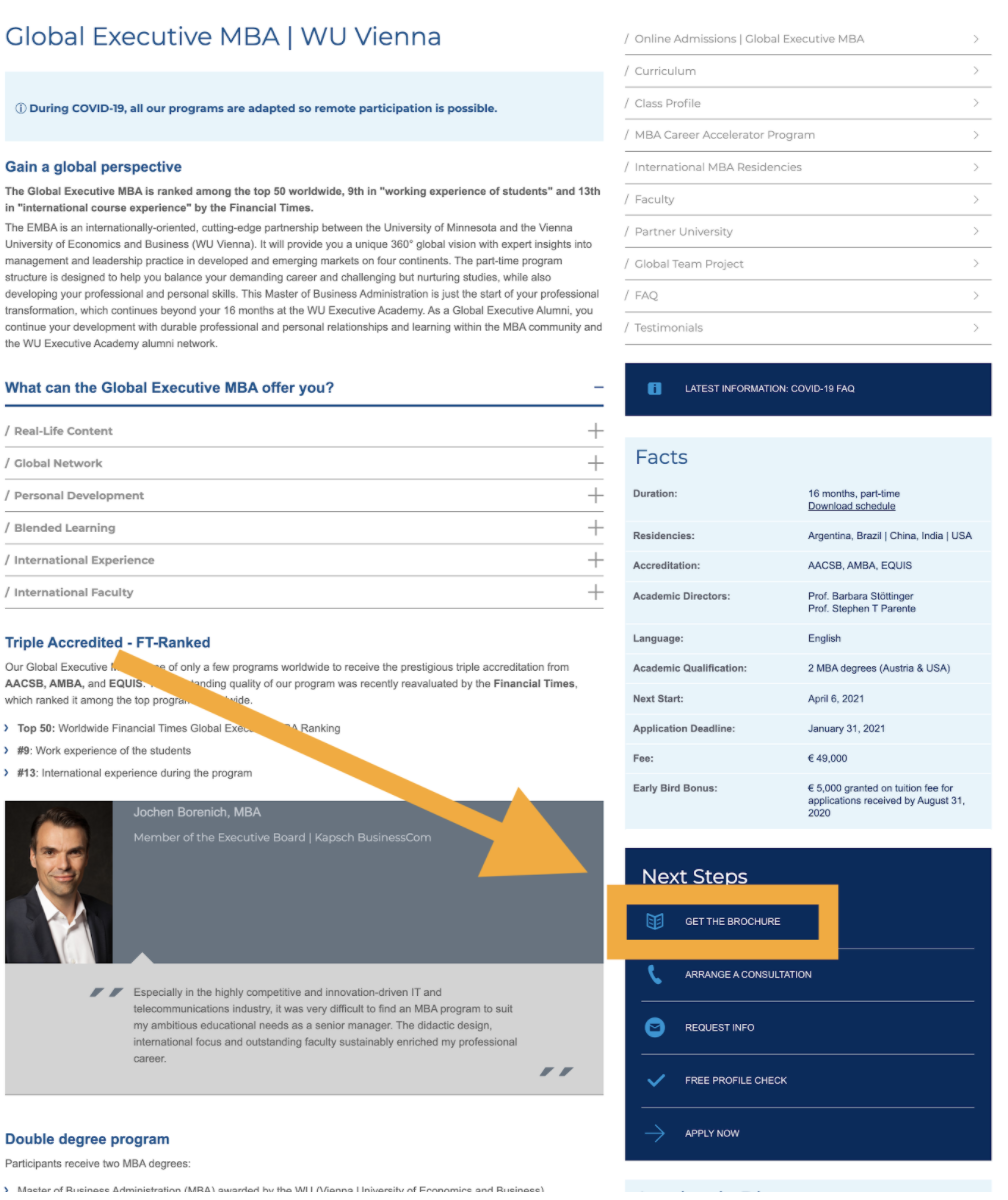
Another simple but effective way to get more bang for your content marketing buck is to share any and all content you create to your school’s social media channels. This practice not only expands your content reach significantly – it also helps your school boost its brand reputation across social media.
Example: An EC English Language Centres video on its online courses shared on Facebook and LinkedIn, respectively.
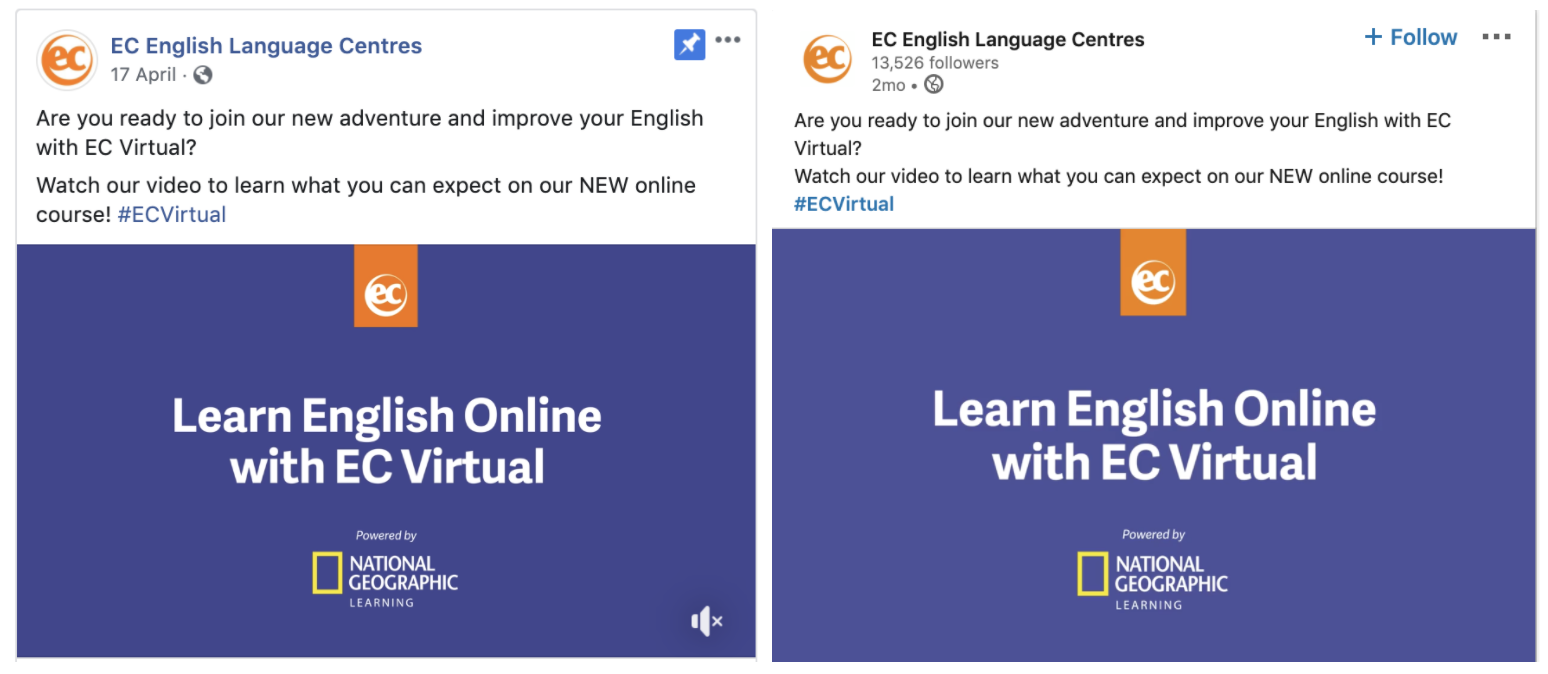
Another great way to offer prospects valuable resources throughout the enrollment journey is by including this content in your email marketing campaigns.
Example: An email from William H. Bowen School of Law, which includes a guide that covers a number of different admissions areas.

All these content amplification strategies are both free and relatively easy ways to significantly increase the reach of your school’s content. However, if you want to quickly and exponentially expand that audience, you may want to invest in paid advertising.
On social media, you could boost a Facebook post that features a blog post, for instance. You could also create ad campaigns dedicated to promoting a video that showcases your school’s online courses.
Example: A video Facebook Ad from the English School of Canada.
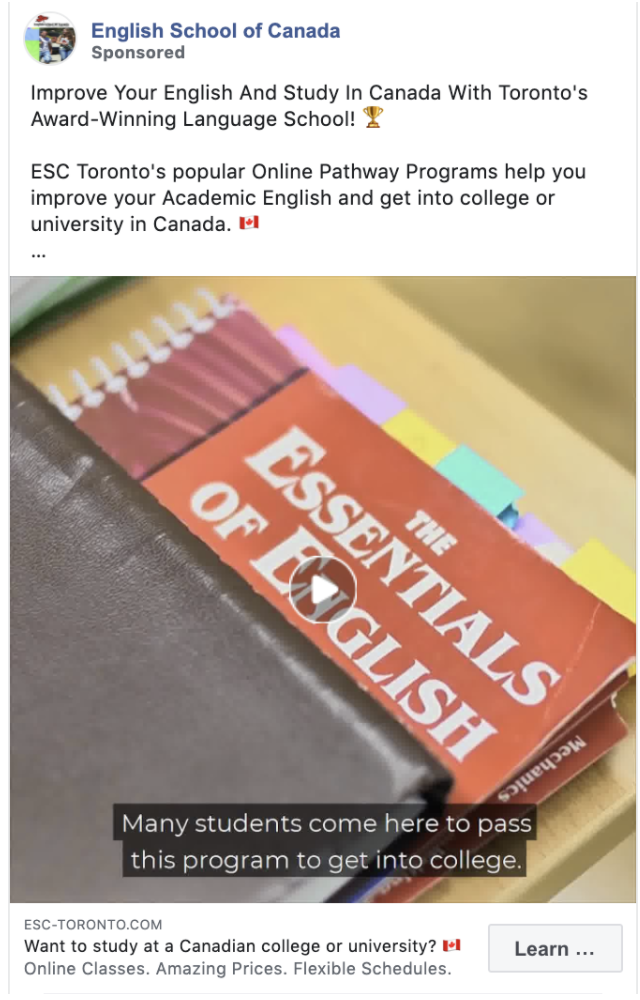
If you want to feature your content on third-party sites and media outlets, you can create ad campaigns using advertising platforms such as Outbrain, Taboola, and Zemanta. These services can get your content displayed on sites like People, ESPN, and CNN using the same sort of targeting parameters you’ll find on Google Ads or social media advertising platforms.
Depending on your school’s recruitment objectives, and the role that content marketing plays in your overall strategy, the types of content you can create and the ways you can promote online courses are endless. Along with the versatility of content marketing, one of the greatest benefits of creating content is that it can boost other elements of your digital marketing strategy, from your website ranking to email marketing, and more.






